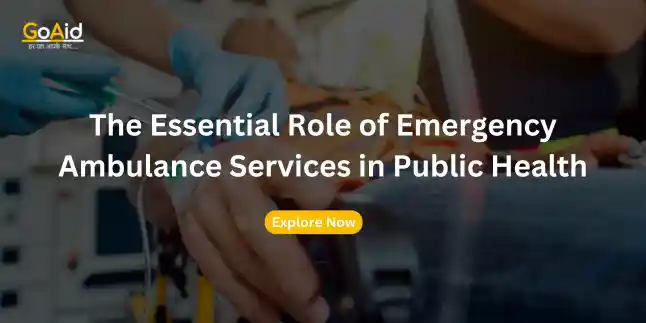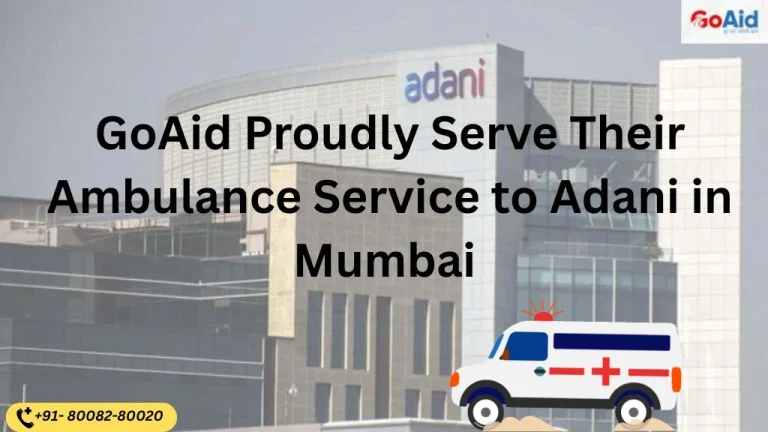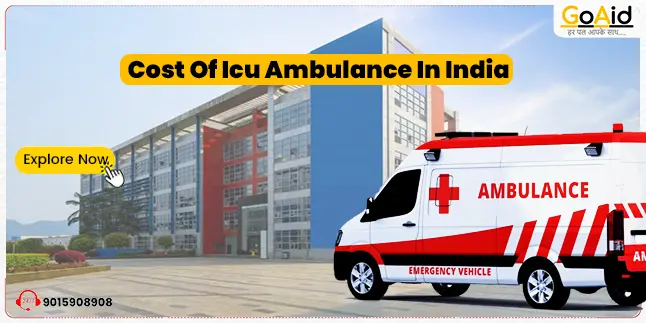In India, we well as in the world, people are facing some medically torn Emergency Conditions. These emergency condition needs to be considered and cared for with sensitivity. This work is usually done by Emergency ambulance services at the spot of emergency.
Generally, people are not aware of the specialty and working of emergency ambulance services and ask about its importance and search on Google about The Essential Role of Emergency Ambulance Services in Public Health.
This is why, in this blog, we have added all the information about The Essential Role of Emergency Ambulance Services in Public Health and also added the importance of Emergency Ambulance Services. If you are also looking for the answer to this, then this blog is for you.
So, letŌĆÖs start-
What is an Emergency Ambulance Service?
Role of Emergency Ambulance Service is a specialized medical transport unit designed to provide swift and critical care to individuals facing life-threatening situations. Equipped with advanced medical equipment, trained paramedics, and life-saving interventions, these services play a pivotal role in the initial response to emergencies.
They swiftly navigate through traffic, reaching the scene promptly to stabilize patients before transporting them to healthcare facilities. Emergency Ambulance services are essential in delivering pre-hospital care, administering vital treatments, and ensuring a seamless transition to hospitals. The primary goal is to minimize response times, offering immediate assistance and significantly impacting patient outcomes during critical medical incidents.

The Essential Role of Emergency Ambulance Services in Public Health
There are many roles of an Emergency ambulance service in Public. However, we have selected the major 5 essential roles of Emergency ambulance services in Public Health below:
1. Immediate Response and Timely Care
- Emergency ambulance services provide rapid response to medical emergencies, minimizing the time between the incident and professional medical care.
- Swift intervention by trained paramedics can significantly impact patient outcomes and increase the chances of survival.
2. Accessibility and Equity
- Emergency Ambulance services ensure accessibility to emergency care for all, regardless of geographical location or socioeconomic status.
- By reaching remote and underserved areas, these services contribute to reducing health disparities and promoting health equity.
3. Collaboration with the Healthcare System
- Emergency Ambulance services seamlessly integrate with hospitals and healthcare facilities.
- Effective communication and coordination ensure a smooth transition of care from the site of the emergency to medical facilities, enhancing overall patient care.
4. Training and Professionalism
- Highly skilled personnel, including paramedics and emergency medical technicians, are integral to emergency ambulance services.
- Rigorous training programs and continuous education ensure that professionals are well-equipped to make critical decisions and provide high-quality care.
5. Challenges and Innovations
- Ambulance services face challenges like traffic congestion and resource limitations.
- Ongoing innovations in technology, such as GPS tracking and telemedicine, address these challenges and improve the efficiency of emergency response efforts.
Importance of Emergency Ambulance Services
There is a lot of importance in emergency ambulance services in any country or society in terms of the best medical infrastructure. Here, we have added the top 10 important Emergency ambulance services below:
1. Critical Time Management: Emergency ambulance services excel in minimizing response times, crucial in time-sensitive medical emergencies.
2. Life-Saving Interventions: Equipped with advanced medical equipment, emergency ambulance services administer vital treatments on-site, enhancing survival rates.
3. Universal Accessibility: Ambulance services ensure equitable access to emergency care, reaching both urban centers and remote areas.
4. Seamless Integration: Collaboration with the healthcare system guarantees a smooth transition from pre-hospital care to hospital admission.
5. Highly Skilled Personnel: Trained paramedics and emergency medical technicians make swift, informed decisions, optimizing patient care.
6. Bridge to Health Equity: By addressing disparities in healthcare access, ambulance services contribute significantly to achieving health equity.
7. Continuous Training: Rigorous training programs keep personnel updated on medical advancements, ensuring the highest standards of professionalism.
8. Innovative Solutions: Embracing technology like GPS tracking and telemedicine, ambulance services overcome challenges and enhance efficiency.
9. Immediate Impact: The rapid response of ambulance services directly influences positive patient outcomes during critical incidents.
10. Essential Community Safeguard: Acknowledging the indispensable role of emergency ambulance services is paramount for ensuring the well-being and safety of communities.
GoAid Emergency Ambulance Services & its features
GoAid stands as a beacon of excellence in the realm of emergency ambulance services in India. Dedicated to providing state-of-the-art medical transport, GoAid ensures prompt and professional assistance during critical moments, prioritizing the well-being of individuals across the country.
Key Features of GoAid Emergency Ambulance Services-
1. Comprehensive Fleet: GoAid boasts a diverse fleet of ambulances, ranging from basic life support to advanced critical care units, ensuring tailored solutions for various medical needs.
2. State-of-the-Art Equipment: Equipped with cutting-edge medical technology, GoAid ambulances feature advanced life support systems, enabling on-site interventions and stabilizations.
3. Pan-India Coverage: GoAid proudly serves the entire territory of India, extending its reach to urban centers and remote areas, guaranteeing universal access to emergency medical care.
4. Rapid Response: With a commitment to minimizing response times, GoAid ensures that its ambulances reach the scene swiftly, understanding the significance of time in critical medical situations.
5. Highly Trained Personnel: GoAid’s team comprises skilled paramedics and emergency medical technicians, rigorously trained to make informed decisions and deliver top-notch care.
6. Seamless Integration with Healthcare Facilities: GoAid collaborates seamlessly with hospitals and healthcare facilities, facilitating a smooth transition of patients from the scene to professional medical care.
7. Continuous Training Programs: To maintain the highest standards of professionalism, GoAid invests in continuous training programs for its personnel, keeping them abreast of the latest medical advancements.
8. Technology-Driven Solutions: GoAid embraces technology, incorporating GPS tracking and telemedicine capabilities to enhance the efficiency of its emergency response efforts.
9. Health Equity Advocacy: GoAid contributes to bridging healthcare disparities, and promoting health equity by ensuring that quality emergency medical services are accessible to all.
10. Community-Centric Approach: Rooted in a commitment to community well-being, GoAid recognizes the essential role it plays in safeguarding lives and contributing to the overall health resilience of the nation.
Conclusion
In conclusion, the indispensable role of emergency ambulance services in public health cannot be overstated. Swift response times, life-saving interventions, and universal accessibility form the bedrock of their significance.
By seamlessly integrating with the healthcare system and embracing innovation, these services not only save lives but also contribute to addressing health disparities. As frontline guardians, emergency ambulance services embody a commitment to the well-being of communities, exemplifying their crucial role in maintaining and enhancing public health standards.
















